#primary school resources
Explore tagged Tumblr posts
Text
"gifted kids" discourse is always funny to me bc it took me a while to realise that all of the conversation centred almost entirely on how it is in the US.
we had it here, but it was probably more accurately described as a place to put all the problem [read: weird & annoying to your teacher] children who weren't insubordinate enough to bury under whatever disciplinary processes your school had at their disposal
#the program i was in was one day a week and horrendously under-resourced#like my regular primary school class had better access to things#this isnt me feeling sorry for myself btw im just pointing out that it sucked hugely in a different way here
7 notes
·
View notes
Text
Building Strong Sentence Structure in Young Children: A Guide for Parents and Teachers

Building strong sentence structure is foundational for a child's language development, paving the way for clear communication and academic success. This guide will equip parents and teachers with effective strategies to help young learners master this essential skill.
Why is Sentence Structure Important?
Well-formed sentences are crucial for a child's overall development:
Improved Reading Comprehension: Understanding how sentences are constructed enhances reading fluency and comprehension.
Enhanced Writing Skills: Strong sentence structure is the bedrock of effective written communication, from simple sentences to complex paragraphs.
Cognitive Development: Learning to organize thoughts into coherent sentences strengthens cognitive skills like logic, critical thinking, and problem-solving.
Foundational Strategies
Building a strong foundation for sentence structure begins with understanding the core components:
Subject (or Doer of the Action for simple sentences): This is the noun or pronoun that performs the action in the sentence. For example, in "The cat sleeps," "cat" is the subject.
Verb (or Action Word for simple sentences): This is the word that describes the action being performed by the subject. In the example above, "sleeps" is the verb.
By introducing these fundamental concepts early on, children can begin to grasp the basic structure of a sentence.
Engaging Learning Activities

Learning should be an enjoyable experience. Here are some fun and effective ways to engage young children:
Play Games:
"I Spy": "I spy with my little eye something blue (adjective)."
"Go Fish": "Do you have the red (adjective) card (noun)?"
"Simon Says": "Simon says jump (verb)!"
Sing Songs and Rhymes: Many nursery rhymes and children's songs utilize simple sentence structures, making them excellent learning tools.
Tell Stories: Encourage children to retell simple stories using their own words, prompting them to use complete sentences.
Real-World Applications
Connecting sentence structure to everyday experiences reinforces learning:
Describe Everyday Activities: "We are eating (action word) breakfast (noun)."
Give Simple Instructions: "Please put (action word) your toys (noun) away."
Engage in Conversations: Ask open-ended questions that encourage children to use complete sentences in their responses. For example, instead of "What did you do at school today?" ask, "Can you tell me one thing you did at school today?"
Visual Learning Aids
Visual aids can make abstract concepts more concrete for young learners:
Use Picture Cards: Flashcards with pictures of objects, actions, and adjectives can help children visualize and identify key elements of a sentence.
Draw and Write Together: Encourage children to draw pictures and then write simple sentences to describe their drawings.
Use Sentence Strips: Cut strips of paper and write individual words on each strip. Have children arrange the strips to form complete sentences.
Educational Apps: Many educational apps incorporate interactive games and activities that teach sentence structure.
Educational Videos: Engaging videos can introduce sentence concepts, demonstrate sentence building, and provide visual examples. Here's a Youtube video that spark sentence structure awareness:
youtube
Interactive Whiteboards: In a classroom setting, interactive whiteboards can be used for collaborative sentence building exercises and games.
Creating a Supportive Learning Environment
Praise and Reinforce Efforts: Celebrate every attempt to form a sentence, even if it's not perfect. Positive reinforcement encourages continued effort.
Be Patient with Mistakes: Children are still learning. Avoid harsh corrections. Focus on guiding and supporting their language development.
Focus on Communication: The primary goal is to encourage clear and effective communication. Grammatical perfection will come with time and practice.
The Power of Reading Aloud
Reading aloud provides invaluable exposure to language:
Choose Books with Simple Sentence Structures: Picture books and early reader books are excellent resources.
Discuss the Stories: Ask questions about the characters, plot, and the way the story is told. Guide children to identify different sentence types (e.g., "Look, this sentence tells us what the dog is doing!").

Conclusion
By incorporating these strategies into daily routines, parents and teachers can effectively guide young children in their journey of language development. Remember to keep learning fun and engaging, and celebrate every milestone along the way.
You might be interested to read other articles included in the Reading Skills series:
Whole Word Recognition: A Reading Technique
The Phonics Approach to Teaching Reading
#HomeschoolingFun#ReadingForKids#HomeschoolActivities#LearnAtHome#PreschoolEducation#ReadingAdventure#InteractiveLearning#HomeEducation#Educational videos#reading and writing resources for primary school#short stories#childrensstory#selfesteem#bravery#grasshopper#kidsbooks#readaloud#bedtimestory#sentences#grammarforkids#learningthroughstories#parenttips#teachertips#Youtube
2 notes
·
View notes
Text
jesus christ how many fucking times have i redone this readmore
i don't think it means anything that every six to eight months i end up having another long 'am i lesbian or am i still bisexual' crisis. i think that's a very normal thing to do.
#what does it mean what does it all mean dot gif#personal#like the data points so far are:#crushes on boys all through primary and secondary school#desire to kiss best friend in s5 which triggered the 'i'm bi' realisation#4 year ldr with a woman#one bad date with a man i had no chemistry with#three dates with a girl i quite liked but not enough to go any further#two dates with a woman i quite like and we'll see how things go from there#and chatting with a woman that i also quite like but the vibes are feeling more platonic if i'm honest#like it's very much casual dating but also i. don't really feel the desire to try and date a man rn#WHAT DOES IT MEAN WHAT DOES IT ALL MEAN DOT GIF#i love being bisexual. but also. there is much to consider#the lesbian masterdoc is a good resource but it also assumes you have some experience dating men#which i do not#there's things in it about attraction to men which don't reflect my experience#but then there's other things which very much DO#AAARRRGGHH
4 notes
·
View notes
Text
Why Hands-On Learning Works: Teaching Fractions with Board Games

Teaching fractions can be challenging, especially for young learners who struggle with abstract mathematical concepts. However, hands-on learning methods, such as using board games, can make the process engaging, interactive, and more effective. By incorporating play into learning, students develop a deeper understanding of fractions in a fun and stress-free environment.
Why Hands-On Learning Is Effective
Hands-on learning engages students by allowing them to actively participate in the learning process. Instead of passively listening to explanations, children get to see, touch, and manipulate objects, which helps them better understand mathematical concepts.
Using board games to teach fractions is particularly beneficial because it:
Encourages problem-solving and critical thinking
Makes learning fun and engaging
Provides a visual and interactive representation of fractions
Enhances collaboration and social skills through group play
How Board Games Help in Teaching Fractions
Board games provide students with practical applications of fractions, helping them connect the concept to real-life situations. Some common ways they support learning include:
1. Visualising Fractions
Many children struggle with the abstract nature of fractions. Board games often include fraction cards, spinners, or pieces that physically represent parts of a whole. This allows students to see how fractions work in action, reinforcing their understanding.
2. Encouraging Active Participation
Games make learning fractions more exciting. When students roll dice, move pieces, or match fraction cards, they are actively engaged in the learning process. This hands-on experience strengthens retention and understanding.
3. Making Learning Fun and Competitive
Competition can motivate students to pay closer attention and practice fractions more often. Board games introduce an element of fun, making students more eager to participate and learn without feeling pressured.
Best Board Games for Teaching Fractions
Several board games are designed specifically to help children understand fractions. Some of the best options include:
Fraction Bingo – Helps students identify and match fractions quickly.
Pizza Fraction Fun – Uses pizza slices to teach different fraction values.
Fraction War – A card game that compares and orders fractions.
Roll and Cover Fractions – Uses dice and fraction charts to reinforce learning.
Incorporating Board Games Into Lesson Plans
Teachers can integrate board games into their daily lesson plans to reinforce fraction concepts in a playful way. Using math resources for teachers, such as printable fraction game templates, activity sheets, and task cards, educators can create engaging and structured learning experiences.
A simple way to introduce a board game into a lesson is:
Start with an Explanation – Briefly introduce the fraction concept before beginning the game.
Demonstrate the Game – Show students how to play and explain the rules clearly.
Let Students Play in Groups – Encourage small group participation for collaborative learning.
Discuss the Learning Outcomes – After playing, discuss what students learned and clarify any doubts.
Finding the Right Resources for Teaching Fractions
Using the right materials can make a significant difference in how students grasp fractions. Maths resources for teachers in Australia provide a variety of fraction-based games and activities tailored to different learning levels. Whether teaching in a classroom or homeschooling, these resources help make fractions more accessible and engaging.
For primary school educators, mathematics resources for primary school include board games, printable activities, and interactive tools that align with curriculum requirements. These resources ensure students receive a well-rounded education in fractions while having fun in the process.
Hands-on learning with board games is an excellent way to teach fractions effectively. By engaging students with interactive activities, teachers can make abstract concepts easier to understand while keeping learning fun and exciting. With the right math resources for teachers, educators can create dynamic lessons that help students master fractions with confidence.
The author is working at a company that offers the best teacher resources for primary and secondary education. He often writes articles relating to education for several publications. Visit https://resourcesforteaching.com.au/.
#math resources for teachers#Maths resources for teachers in Australia#mathematics resources for primary school
0 notes
Text
Here's the top 2 stories from each of Fix The News's six categories:
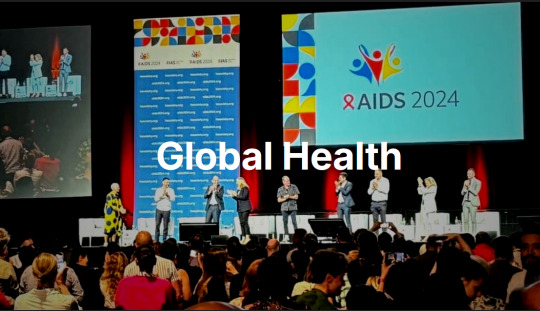
1. A game-changing HIV drug was the biggest story of 2024
In what Science called the 'breakthrough of the year', researchers revealed in June that a twice-yearly drug called lenacapavir reduced HIV infections in a trial in Africa to zero—an astonishing 100% efficacy, and the closest thing to a vaccine in four decades of research. Things moved quick; by October, the maker of the drug, Gilead, had agreed to produce an affordable version for 120 resource-limited countries, and by December trials were underway for a version that could prevent infection with just a single shot per year. 'I got cold shivers. After all our years of sadness, particularly over vaccines, this truly is surreal.'
2. Another incredible year for disease elimination
Jordan became the first country to eliminate leprosy, Chad eliminated sleeping sickness, Guinea eliminated maternal and neonatal tetanus, Belize, Jamaica, and Saint Vincent & the Grenadines eliminated mother-to-child transmission of HIV and syphilis, India achieved the WHO target for eliminating black fever, India, Viet Nam and Pakistan eliminated trachoma, the world’s leading infectious cause of blindness, and Brazil and Timor Leste eliminated elephantiasis.
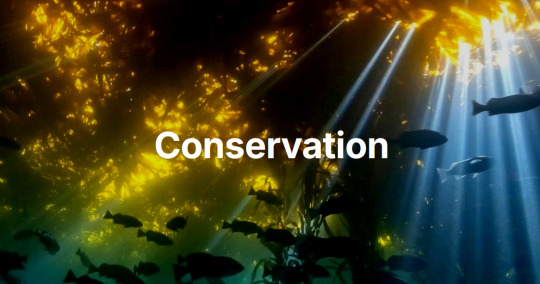
15. The EU passed a landmark nature restoration law
When countries pass environmental legislation, it’s big news; when an entire continent mandates the protection of nature, it signals a profound shift. Under the new law, which passed on a knife-edge vote in June 2024, all 27 member states are legally required to restore at least 20% of land and sea by 2030, and degraded ecosystems by 2050. This is one of the world’s most ambitious pieces of legislation and it didn’t come easy; but the payoff will be huge - from tackling biodiversity loss and climate change to enhancing food security.
16. Deforestation in the Amazon halved in two years
Brazil’s space agency, INPE, confirmed a second consecutive year of declining deforestation in the Brazilian Amazon. That means deforestation rates have roughly halved under Lula, and are now approaching all time lows. In Colombia, deforestation dropped by 36%, hitting a 23-year low. Bolivia created four new protected areas, a huge new new state park was created in Pará to protect some of the oldest and tallest tree species in the tropical Americas and a new study revealed that more of the Amazon is protected than we originally thought, with 62.4% of the rainforest now under some form of conservation management.
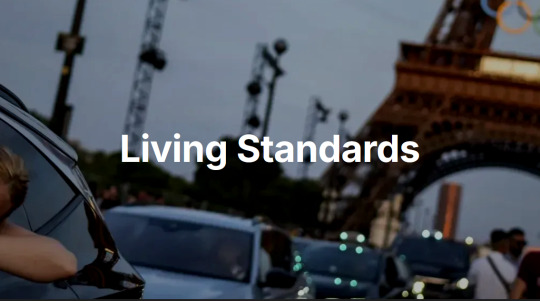
39. Millions more children got an education
Staggering statistics incoming: between 2000 and 2023, the number of children and adolescents not attending school fell by nearly 40%, and Eastern and Southern Africa, achieved gender parity in primary education, with 25 million more girls are enrolled in primary school today than in the early 2000s. Since 2015, an additional 110 million children have entered school worldwide, and 40 million more young people are completing secondary school.
40. We fed around a quarter of the world's kids at school
Around 480 million students are now getting fed at school, up from 319 million before the pandemic, and 104 countries have joined a global coalition to promote school meals, School feeding policies are now in place in 48 countries in Africa, and this year Nigeria announced plans to expand school meals to 20 million children by 2025, Kenya committed to expanding its program from two million to ten million children by the end of the decade, and Indonesia pledged to provide lunches to all 78 million of its students, in what will be the world's largest free school meals program.
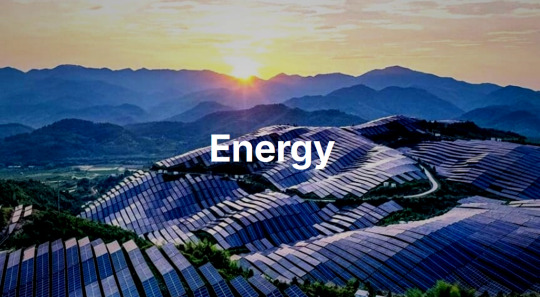
50. Solar installations shattered all records
Global solar installations look set to reach an unprecedented 660GW in 2024, up 50% from 2023's previous record. The pace of deployment has become almost unfathomable - in 2010, it took a month to install a gigawatt, by 2016, a week, and in 2024, just 12 hours. Solar has become not just the cheapest form of new electricity in history, but the fastest-growing energy technology ever deployed, and the International Energy Agency said that the pace of deployment is now ahead of the trajectory required for net zero by 2050.
51. Battery storage transformed the economics of renewables
Global battery storage capacity surged 76% in 2024, making investments in solar and wind energy much more attractive, and vice-versa. As with solar, the pace of change stunned even the most cynical observers. Price wars between the big Chinese manufacturers pushed battery costs to record lows, and global battery manufacturing capacity increased by 42%, setting the stage for future growth in both grid storage and electric vehicles - crucial for the clean flexibility required by a renewables-dominated electricity system. The world's first large-scale grid battery installation only went online seven years ago; by next year, global battery storage capacity will exceed that of pumped hydro.
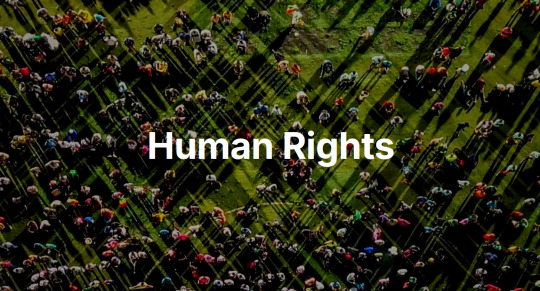
65. Democracy proved remarkably resilient in a record year of elections
More than two billion people went to the polls this year, and democracy fared far better than most people expected, with solid voter turnout, limited election manipulation, and evidence of incumbent governments being tamed. It wasn't all good news, but Indonesia saw the world's biggest one day election, Indian voters rejected authoritarianism, South Korea's democratic institutions did the same, Bangladesh promised free and fair elections following a 'people's victory', Senegal, Sri Lanka and Botswana saw peaceful transfers of power to new leaders after decades of single party rule, and Syria saw the end of one of the world's most horrific authoritarian regimes.
66. Global leaders committed to ending violence against children
In early November, while the eyes of the world were on the US election, an event took place that may prove to be a far more consequential for humanity. Five countries pledged to end corporal punishment in all settings, two more pledged to end it in schools, and another 12, including Bangladesh and Nigeria, accepted recommendations earlier in the year to end corporal punishment of children in all settings. In total, in 2024 more than 100 countries made some kind of commitment to ending violence against children. Together, these countries are home to hundreds of millions of children, with the WHO calling the move a 'fundamental shift.'
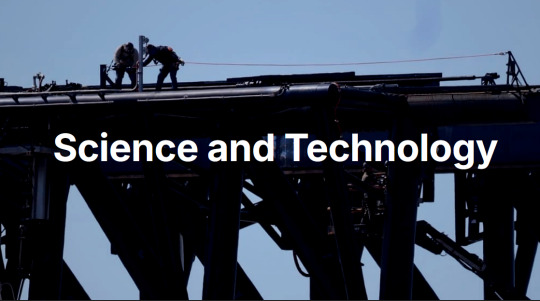
73. Space exploration hit new milestones
NASA’s Europa Clipper began a 2.9 billion kilometre voyage to Jupiter to investigate a moon that may have conditions for life; astronomers identified an ice world with a possible atmosphere in the habitable zone; and the James Webb Telescope found the farthest known galaxy. Closer to Earth, China landed on the far side of the moon, the Polaris Dawn crew made a historic trip to orbit, and Starship moved closer to operational use – and maybe one day, to travel to Mars.
74. Next-generation materials advanced
A mind-boggling year for material science. Artificial intelligence helped identify a solid-state electrolyte that could slash lithium use in batteries by 70%, and an Apple supplier announced a battery material that can deliver around 100 times better energy density. Researchers created an insulating synthetic sapphire material 1.25 nanometers thick, plus the world’s thinnest lens, just three atoms across. The world’s first functioning graphene-based semiconductor was unveiled (the long-awaited ‘wonder material’ may finally be coming of age!) and a team at Berkeley invented a fluffy yellow powder that could be a game changer for removing carbon from the atmosphere.
-via Fix The News, December 19, 2024
#renumbered this to reflect the article numbering#and highlight just how many stories of hope there are#and how many successes each labeled story contains#2024#good news#hope#hope posting#hopeposting#hopepunk#conservation#sustainability#public health#energy#quality of life#human rights#science and technology
3K notes
·
View notes
Text
House Significations
1st House: Head/ face/ physical body, eyes and smile. Our identity. Others perception of us. Our birth. Birth marks/ moles and scars. Character. Perspective/ outlook. Beginnings. Ego
2nd House: Throat/ neck/ voice. Resources and personal values. Physical possessions. Self-esteem. Money/ income. Security. Cultivation. Substance
3rd House: Arms/ shoulders and hands. Communication style. Primary school. Reading/ writing. Intellect. Siblings and cousins. Immediate communities. Transportation
4th House: Chest/ breasts/ stomach. Family/ ancestors. Roots/ traditions. Private life. Home. Domesticity. Mother/ care taker. Foundations. Heritage. Comfort/ relaxation
5th House: Heart/ Spine/ Solar Plexus. Pleasure. Creativity. Romance. Children/ first born child. Self-expression. Humor. Leisure/ entertainment
6th House: Digestive system/ intestines: Healthcare/ wellness. Daily routines. Known enemies. Employment/ skills. Coworkers. Consistency. Strength/ courage
7th House: Urinary tract/ kidneys/ bladder. 1-on-1 relationships. Business partners. Marriage partners. Contracts/ commitments. Compromise. People/ things we attract and are attracted to
8th House: Reproductive system/ genitals/ anus. Secrets/ lies. Death. Judgement. Transformation. Debts/ taxes. Shared resources. Conscious fears. Instincts/ intuition. Occultism
9th House: Hips/ thighs/ liver. Ideology/ philosophy. Long distance travels. Expansion/ exploration. Knowledge. Spirituality. Foreign affairs. Belief systems. Culture
10th House: Bones/ skeleton/ teeth/ skin. Reputation. Public image. Occupation. Focus/ ambition/ motivation. Professional self. Government. Authority. Father figure
11th House: Circulatory system/ veins/ calves/ ankles. Group efforts/ charity. Friendship. Gifts/ help from others. Innovation. Technology. Social work. Wistfulness. Acquaintances
12th House: Feet/ lymph nodes. Institutions. Unconsciousness. Nightmares/ dreams. Psychic abilities. Karma. Self-undoing. Fears. Privacy/ refuge. Peace. Forgiveness
#astrology#astro notes#astro posts#astrology placements#astro community#astro observations#zodiac signs#zodiac
3K notes
·
View notes
Text
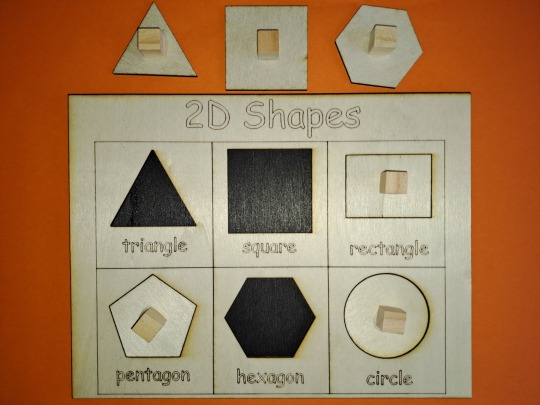
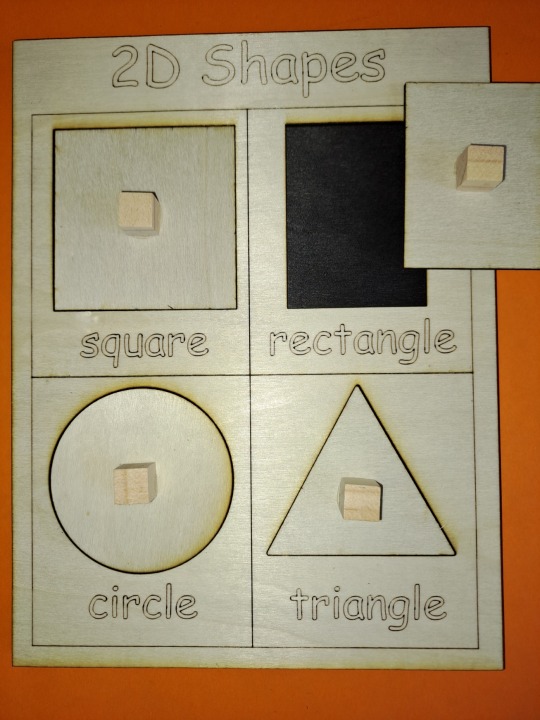

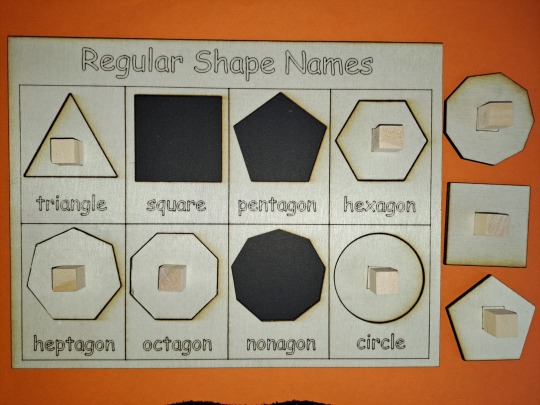
Now an extra 4 sets of slotting shape games.
#learning#wooden resources#education#home school#maths#home tutors#math stuff#mathematics#mathsisfun#etsyshop#primaryteacher#primarymaths#shapenames#shape#shapes#eyfs#primary school#wooden toys#woodentoys#woodenpuzzlesforkids#learning games#teaching#learn
1 note
·
View note
Text
me going through my tri weekly "what if im not autistic and don't have adhd and im just really good at faking it crisis"
#my age is too ambiguous to get a proper diagnosis outside of looking at multiple diagnostic criterias for autism and adhd#and im afab#“you dont need it since youre not starting a proper job and youre not a 5 year old starting primary school who needs resources”#and im just sat here like#okay 😜#ill keep that in mind 👆
0 notes
Text
I don't think it's talked about enough how truly buck wild our level/speed of communication is. We didn't have this 100 years ago! And even then it's only been in the last 20-30 we really embraced technology and our global stage.
Our communities are still experiencing huge upheavals around this and we don't acknowledge it because of all the benefits being wired in brings. You can find jobs and resources and entertainment, sure, but you also have to have accounts here, here and here to access healthcare or a rent portal or TV.
On one end we have an elderly class that is overwhelmed. They learned complex systems already! Taxes, licensing, registration. They know where the offices are - right down the street. Why the change? "Because this site simplifies it." Does it? Does it really? Is it really more simple when someone has to have reliable access to a computer, the wherewithal to make/check an email, and the ability to navigate ten different sites to access the one they want? Why can't they go meet their doctor in person when that's the way it's been since they were children? Why did they learn to make eye contact and shake hands if not for this?
On the other, we have a younger generation that has been tasked with absorbing a huge amount of information since day one. Their brains have to work differently because the tools given to them are different than the ones older generations received. Of course they can find a primary care physician. The site operates like the one they were forced to learn in high school to turn in assignments! And why should they know how to do taxes or balance a checkbook? They were tasked with learning how to navigate the internet - they know where the information is. In a sea of "right now" demands and "this shouldn't take long because you can Google it" assignments, they have to be selective in what takes their attention.
We are currently between a time of "trust the process" and "immediately." So many people feel unheard or ignored because of this. The elderly feel isolated, helpless, and stonewalled. The youth feel anxious, mocked, and bullied.
The world changed and it happened invisibly.
#caffeine chatter#and there are people from different age groups all over this spectrum#they have to help their parents and struggle to understand their kids#i made this into absolutes#but it's really a spectrum of change that's influenced by economic and geographic factors
2K notes
·
View notes
Text
Whole Word Recognition: A Reading Technique

Teaching children to read involves many approaches, and one effective strategy is Whole Word Recognition. This method focuses on helping children recognize entire words, especially high-frequency sight words, by sight. This article explains what the Whole Word Recognition technique is, how it works, and practical ways to implement it at home or in the classroom.
What Is Whole Word Recognition?
Whole Word Recognition is a technique that teaches children to instantly recognize entire words without decoding them letter by letter. This approach is particularly effective for high-frequency sight words that appear often in texts but may not follow standard phonics rules (e.g., "the," "and," "is").
By building a bank of words children can recognize on sight, this method helps improve reading fluency and confidence.
How Whole Word Recognition Works
1. Introduction of High-Frequency Sight Words
Begin with commonly used words like "the," "and," "is," "said," and "you."
Gradually introduce more complex sight words as the child progresses.
Focus on words that frequently appear in beginner texts and everyday contexts.
2. Repetition Through Various Tools
Use flashcards with the word printed clearly, along with illustrations if possible. Preschool High Frequency Word Flash cards Ready to Use available.
Create a word wall in the classroom or at home, displaying sight words in large, colorful letters.
Play interactive games like memory matching, bingo, or "word hunt" to reinforce learning.

3. Incorporating Visual Cues and Illustrations
Pair words with pictures to help children connect meaning to the word.
Use books with large print and illustrations where sight words are emphasized.
Include colorful posters or charts that combine sight words and images.
What You Can Do...
1. At Home
Label everyday objects around the house (e.g., "door," "chair," "table").
Practice reading sight words during storytime by pointing them out in books.
Use magnetic letters or sticky notes to create sight word displays on the fridge or walls.
2. In the Classroom
Dedicate a section of the classroom to a "word wall" that grows as students learn new words. Preschool High Frequency Sight Word Flash Cards Ready to Use, available now.
Start each day with a sight word review using flashcards or a group activity.
Incorporate sight words into songs, poems, and rhymes to make learning fun.
3. While Out and About
Point out sight words on signs, menus, and advertisements while shopping or traveling.
Encourage children to read short instructions or labels (e.g., "push," "stop," "open").
Create scavenger hunts where children look for specific sight words in their environment.
Benefits of Whole Word Recognition
Improves Fluency: Children learn to read common words quickly, making reading smoother and more enjoyable.
Builds Confidence: Recognizing words instantly reduces frustration and boosts self-esteem.
Enhances Comprehension: With fewer decoding efforts, children focus more on understanding the text.
Supports Early Writing Skills: Familiarity with sight words helps children spell and write these words correctly.
Suggested Tools
Sight Word Flashcards
Use colorful cards with a word on one side and an illustration on the other (e.g., "cat" paired with a picture of a cat).

Word Walls
Create a vibrant display of sight words in a prominent place. Use large fonts and bright colors.
Interactive Games
Design board games or digital games that involve identifying or matching sight words.
Themed Worksheets
Provide worksheets where children trace, color, and match sight words.
Sight Word Storybooks
Introduce books written specifically with high-frequency sight words for early readers.
Tips for Parents and Teachers
Be Patient: Some children may need more time and practice to remember sight words.
Celebrate Progress: Encourage and praise children as they master new words.
Mix and Match Techniques: Combine Whole Word Recognition with phonics to create a balanced reading approach.
Use Technology: Leverage educational apps and online resources that focus on sight word recognition.

Conclusion
Whole Word Recognition is an effective and enjoyable way to help children develop reading fluency and confidence. By focusing on high-frequency sight words and using tools like flashcards, word walls, and interactive games, parents and teachers can make the learning process engaging and successful. Combined with patience and encouragement, this technique ensures a strong foundation for lifelong reading and learning.
You might be interested to read other articles included in the Reading Skills series:
📚Unlocking Reading Success: The Power of CVC Words📖
The Phonics Approach to Teaching Reading
#learningnewwords#funforkids#under#teddy bear#bedtime stories#poems#adventure#HomeschoolingFun#ReadingForKids#HomeschoolActivities#LearnAtHome#PreschoolEducation#ReadingAdventure#InteractiveLearning#HomeEducation#Educational videos#reading and writing resources for primary school#short stories#Homeschooling#TeachersResources
2 notes
·
View notes
Text
so there's a lot of rhetoric around delegitimising jewsih people as the primary target of the holocaust if not outright removing them from the conversation. there's a plethora of reasons but one thats being overlooked is russia.
state sponsored troll farms have been pushing narratives in order to push attention away from their actions in ukraine, syria and the sahel. when it comes to the holocaust it goes back to the soviet era propaganda about the Great Patriotic War which is what the soviets called world war two. it was taught in school books that slavs were the true target of the holocaust because 24 million soviets died during world war two which if you just look at raw numbers will absolutely appeal to the various flavours of tankies and antisemites (tho that venn diagram is nearly a perfect circle).
the problem with this as a historical fact is its largely fabricated to feed russian nationalism. firstly many of the soviets sent to concentration camps were from conquered territories like ukraine and were sent because they were jewish, not slavic. secondly the vast majority of deaths on the soviet side were due to colossal failures in command essentially throwing soldiers to their deaths, starving civilians to the bone and utter disregard for logistics. thirdly the underpinning of the 24 million slav deaths is ignore the ethnic diversity of the soviet union and ultimately push the narrative that it was mostly russians who suffered in ww2. cossacks, chechyens, ingush, siberians, everyone suddenly became soviet which meant slav which meant as head of the republics they were then renamed as russians.
they all became russian to the nationalist history. all so russia can claim to be the ones who defeated the nazis while the satellite states sat on their hands. which justifies russian invasion in order to 'save' the baltics and eastern europe and ultimately russian control because the locals couldn't be trusted to do it right.
lastly the whole point of the holocaust was the eliminate the jewish people and anyone the nazis blamed them for corrupting, lgbt people were a jewish plot to pervert the family order, the communists were a jewish plot to take over the world (even tho the soviets were pogromming their jews at the same time), disabled people were a jewish plot to poison the aryan genes. this is why even when the nazi war effort was on its knees and berlin was in sight of the allies, they were still sending jews to the camps with resources that could have been used for defense. because the point of the war wasn't just to conquer europe. to the nazis the goal of the war was the exterminate the jews.
this is how numbers can be used to lie so anyone using numbers to 'debunk' the holocaust is pushing a dangerous message. this is how you will know its russian disinformation when the rhetoric moves beyond it wasn't about the jews and starts trying to name who the holocaust was actually about
251 notes
·
View notes
Text
✨ * ― 𝙀𝙓𝙏𝙀𝙉𝙎𝙄𝙑𝙀 𝘾𝙃𝘼𝙍𝘼𝘾𝙏𝙀𝙍 𝘽𝙄𝙊𝙂𝙍𝘼𝙋𝙃𝙔 / 𝙎𝙏𝘼𝙏𝙄𝙎𝙏𝙄𝘾𝙎 𝙏𝙀𝙈𝙋𝙇𝘼𝙏𝙀 !
The Character Development Template is a comprehensive tool for creating detailed and well-rounded character profiles, ideal for writers, roleplayers, or anyone exploring character creation. It covers essential details like identity, personality traits, relationships, and background while diving deeper into habits, quirks, and beliefs. Additional sections include alternate universes, scenario-based questions, and a variety of fun, introspective prompts to uncover hidden aspects of your character. The template also provides space to list inspirations from media, historical figures, and quotes, making it a versatile resource for building dynamic, multidimensional characters.
I. BASIC INFORMATION
Full Name:
Nickname(s):
Pronunciation:
Reason/Meaning of Name:
Preferred Name(s):
Titles:
Date of Birth: (Month, Year)
Place of Birth:
Age: (e.g., 20s, 30s)
Zodiac Sign:
Gender Identity:
Pronouns:
Sexual Orientation:
Romantic Orientation:
Species:
Ethnicity:
Nationality:
Living Arrangements:
Occupation:
Primary Source of Income:
Secondary Source of Income:
Education Level:
Religion:
Political Affiliation:
Social Class:
Dialogue Style:
II. PERSONALITY
Positive Traits:
Neutral Traits:
Negative Traits:
Primary Vice:
Primary Virtue:
Greatest Fear:
Greatest Desire:
Motivations:
Core Values:
Sense of Humor:
Strengths:
Weaknesses:
Quirks:
Pet Peeves:
Life Philosophy:
Jung Type:
MBTI Personality:
Enneagram Type:
Temperament:
Moral Alignment:
Hogwarts House:
III. RELATIONSHIPS
Mother:
Father:
Siblings:
Children:
Significant Other(s):
Best Friend(s):
Rival(s):
Enemies:
Pets:
Other Important Relationships:
IV. BACKGROUND
CHILDHOOD
Place of Birth:
Hometown:
Socioeconomic Status:
Parents' Occupations:
Type of Childhood:
TEENAGE YEARS
Key Relationships:
Education Level:
Significant Events:
ADULTHOOD
Current Residence:
Notable Life Events:
V. HABITS & QUIRKS
Daily Routine:
Nervous Tics:
Unhealthy Habits:
Peculiarities:
VI. ALTERNATE VERSES/THEMES
Verse 1 (Description):
Verse 2 (Description):
Verse 3 (Description):
VII. ADDITIONAL CHARACTER QUESTIONNAIRE
PERSONAL INSIGHTS
What would they say is their biggest flaw?
What is actually their biggest flaw?
What is their biggest blind spot?
What is their guilty pleasure?
How do they act out when stressed?
What makes them envious?
What is one thing they wouldn’t want someone to know about them?
What is their biggest nightmare?
What was their worst subject in school?
What makes them feel insecure?
What are two things that make them uncomfortable in conversation?
SCENARIO QUESTIONS
What would they do if they knew they couldn’t fail?
Name three things they are grateful for.
When was the last time they did something for the first time?
What is something they wish they could redo from the past?
Describe a memory that makes them feel proud.
What’s in their bag/pockets?
Are they proud of who they are? Name an achievement they value.
What do they notice first about someone?
Do they value creativity or practicality more?
Describe a time they did something despite being scared.
What is their favorite gift they’ve received?
How old do they feel on the inside, and why?
Do they feel they’ve missed opportunities they regret? Describe one.
VIII. BELIEFS & OPINIONS
What is their idea of perfect happiness?
What is their greatest fear?
Which trait do they most deplore in themselves?
Which trait do they most deplore in others?
Which living person do they most admire?
What is their greatest extravagance?
What is their current state of mind?
What do they consider the most overrated virtue?
On what occasion do they lie?
Which living person do they most despise?
When and where were they happiest?
Which talent would they most like to have?
If they could change one thing about themselves, what would it be?
What do they consider their greatest achievement?
Where would they most like to live?
What is their most treasured possession?
What do they regard as the lowest depth of misery?
Who is their hero of fiction?
Who are their heroes in real life?
What do they most value in their friends?
What is their motto?
IX. MISCELLANEOUS QUESTIONS
What is their favorite word?
What is their least favorite word?
What sound or noise do they love?
What sound or noise do they hate?
What is their favorite curse word?
If they were reincarnated as a plant or animal, what would it be?
If Heaven exists, what would they like to hear God say when they arrive?
What profession would they most like to attempt?
What profession would they not like to do?
X. INSPIRATION
TV Character(s):
Movie Character(s):
Book Character(s):
Song(s):
Historical Figures:
Quotes/Poetry:
Other Media Inspirations:
349 notes
·
View notes
Text

How to Study Resources
Many people in the modern day pagan/polytheist communities are young. As such, a majority of them are neurodivergent, like I am. For me, that means a majority of the language used in resources is difficult to understand. This was originally going to be a post about that, but the more I wrote, the more I realised that many people, neurodivergent or not, just... don't know how to study resources. So, if you are someone that also struggles, I now present to you... my full guide on how to study resources.
Little disclaimer: I myself am a hellenic polytheist, but this guide is for anyone that struggles with understanding information from resources, whether you are a hellenic polytheist, norse polytheist, kemetic polytheist, etc. Though do understand that I am writing from the perspective of a hellenic polytheist, so I am bound to make mistakes when it comes to religions I am less educated on. You are always welcome to adjust anything I say here to fit your own religion accordingly.
Let's get started.

Firstly, you have to find resources. Many people happen to get stuck here, unfortunately.
How do I know what to research to begin with? When starting out, the general consensus among the polytheist/pagan communities is to research the related historical practice. How the deities were worshipped, what contexts they were worshipped in, the history of the deities, etc etc... all of these are very important factors to consider as a beginner. Only by knowing the history can you then delve deeper into specific terms and specific paths that may be right for you!
How do I find resources? Unfortunately, a lot of resources are behind paywalls or just plain hard to find. Here is a list of websites that I personally use and recommend:
scholar.google.com
academia.edu
pdfdrive.com
library.memoryoftheworld.org
libcom.org
libretexts.org
standardebooks.org
By the way, just a reminder that if you find a resource but there is a pesky paywall in your way, you can probably find it on archive.org for free!
How do I choose a resource though? If you are part of hellenic polytheism, then theoi.com is a great resource, but I always like to add primary sources into my research + not everyone reading this will be part of helpol. Try to find primary sources, first and foremost. Then read historical accounts. Then read secondary sources. Also, make sure your author is reliable! (that link is only for hellenic polytheism though, apologies. If you are not part of hellenic polytheism, then looking into who the author is/was as a person and what sort of contributions they made and beliefs they held never failed me personally!)

Found your resource? Made sure the author is reliable? Wonderful! Now what?
This is usually where the procrastination hits for me. Either that, or I get hyperfocused for a while but never complete it and then lose interest.
To avoid that, break things down and establish a routine. You do not have to finish a book in a day, or understand everything you read straight away. Setting those kinds of expectations for yourself will only make things so much more difficult.
Instead, make a routine for yourself. Outlined below is my routine:
Getting into the mindset. I always like to get myself into the mindset of studying by praying, whether this is studying for school or studying a resource. Since my entire life is devoted to lord Apollon, I pray to Him for it. However, if I am researching a specific god, I will typically pray to them instead. However, sometimes I do not have the spoons to write out a prayer, so I typically just adjust my surroundings instead. Turning my LED lights to a warmer colour and putting on some lofi music usually helps me! The studyblr community has great tips for this part! I also recommend I Miss My Cafe.
Reading. First, I try to read without annotating or taking notes. This is the time to take in the information, to try and grasp what I am reading. This is usually the most difficult part for me, because a lot of academic sources tend to use advanced language and sentence structures that are difficult for me to understand. Unfortunately, the only tip I have for this part is to read as slowly as you need. Do not be ashamed for taking your time. Typically, I only like to read one paragraph before I move onto the next step.
Annotation. This is where I re-read the paragraph I just read. Typically, I like to re-word the paragraph in a simpler way for me to understand. Sometimes I notice little patterns that may connect back to something I've read prior, whether in another book or earlier in the same book. When that happens, that is something I add too! Remember, you do not have to annotate. If it makes it easier, then perfect! If it does not, discard it.
Consult study tools. This is where I cross-reference with other resources. This is how the entire process repeats again. Though, you do not just have to use books for this part! YouTube videos, podcasts, online resources, etc etc...these always help too!
Application. After vetting the information, consider how it would apply to your life, if at all.
Of course, that's just my routine. You are always welcome to use it, but I also greatly encourage you to create your own routine so that you can cater it to your learning style!
I also recommend setting a time limit for yourself. If you have not completed a chapter within the time limit, that is okay! The most important thing about researching is making sure you are not guilting yourself into biting off more than you can chew. Take your time, you have a lot of it.

Research is vital to religions like ours, and research should be something everyone can do! Just because you may need some accommodations does not make you any less intelligent. We all learn differently. That is okay.
I hope this post can serve as something helpful for those who struggle in this area, and as a reminder that you are not alone in your struggles. If you have any questions or would like further clarification on some points, feel free to reach out!
Xaire ♡
#guides ୨୧#beginners ୨୧#helpol#norsepol#kempol#resources#polytheism#hellenic polytheism#norse polytheism#norse paganism#kemetic polytheism#kemetic paganism#kemetism#hellenic worship#kemetic worship#norse heathen#helpol resources#helpol research#demonolatry#theistic satanism#luciferian#luciferianism
315 notes
·
View notes
Text
"Indonesia’s new government started an ambitious project on Monday [January 6, 2025] to fight malnutrition by feeding nearly 90 million children and pregnant women that is expected to cost $28 billion through 2029, although critics question whether the program is affordable.
The Free Nutritious Meal program delivers on a campaign promise by President Prabowo Subianto, who was elected last year to lead the nation, which has more than 282 million people and Southeast Asia’s largest economy. He said the program aims to fight the stunting of growth that afflicts 21.5% of Indonesian children younger than 5 and would raise the income of farmers.
Subianto has pledged to accelerate GDP growth to 8% from 5% now.
In his inauguration speech in October, Subianto said many children are malnourished. His promise to provide free school lunches and milk to 83 million students at more than 400,000 schools is part of a longer-term strategy to develop the nation’s human resources to achieve a “Golden Indonesia” generation by 2045.
“Too many of our brothers and sisters are below the poverty line, too many of our children go to school without breakfast and do not have clothes for school,” Subianto said.
Subianto’s signature program could cost upward of 450 trillion rupiah ($28 billion) by the end of his term in 2029. He said his team has made the calculations to run such a program, and “We are capable.”
The government’s target is to reach an initial 19.5 million schoolchildren and pregnant women in 2025 with a budget of 71 trillion rupiah ($4.3 billion) so as to keep the annual deficit under a legislated ceiling of 3% of GDP, said Dadan Hindayana, the head of the newly formed National Nutrition Agency...
Nearly 2,000 cooperatives will be involved in the free meals program by providing eggs, vegetables, rice, fish, meat, milk and other food, Cooperative Minister Budi Arie Setiadi said.
On Monday, a truck carrying food arrived at SD Cilangkap 08, a primary school in the Jakarta satellite city of Depok. The 740 students were provided rice, stir-fried vegetables, tempeh, stir-fried chicken and oranges.
“We will send a team to each school to facilitate the meal distribution to students every day,” Hindayana said, adding that the program will provide one meal per day for each student from early childhood education to senior high school, covering a third of the daily caloric needs for children, with the government providing the meals at no cost to recipients...
According to the 2023 Indonesian Health Survey, the national stunting prevalence was 21.5%, down around 0.8% from the previous year. The United Nations Children’s Fund estimated that one in 12 Indonesian children younger than 5 suffers from low weight while one in five is shorter than normal. Both conditions are caused by malnourishment.
“That’s so bad and must be solved,” Suwarso said. “Child malnourishment has severe consequences, threatening the health and long-term development of infants and young children throughout this nation.”"
-via Time, January 6, 2025
#indonesia#asia#southeast asia#public health#school meals#free school lunches#free school meals#social safety net#malnutrition#childhood stunting#food insecurity#poverty#good news#hope
731 notes
·
View notes
Text
Writing Notes: The Research Process

Research is an essential process to keep yourself informed on any topic with reliable sources of information.
Research - the process by which you gather reliable information on a specific topic, typically to answer a particular question, form an opinion, or make a decision.
Academics often separate research into 2 distinct types:
primary research (in which the researcher acquires firsthand experience with the topic) and
secondary research (in which the researcher looks at research others have done on the topic).
There are many different research methods, including:
internet research (using search engines, webpages, and other online resources),
scientific research (using the scientific method to test hypotheses),
local and university library research (using books, encyclopedias, newspaper articles, peer-reviewed journal articles, catalogs, and academic databases and directories), and
interviews (using questionnaires and discussions with subjects).
How to Research
The research process can apply to everything from a scientific research paper to a personal question; each type of research has different expectations and processes. In general, here’s a step-by-step tutorial:
Start with a question. The first step of the research process is to have a question. In the case of academic research, your research question might be on a broad conversation in your field. For example, in humanities, a research question might be: “How did feminism affect American literature in the 1970s?” In the case of personal research, your question might be smaller and more specific: “How do I wake up feeling more rested?” If your research is for a high school or college paper, you might need to brainstorm to come up with a question or move on to the research phase to see what kinds of questions and broad topics interest you.
Search broadly. Your preliminary research on a topic is likely to be general—this search strategy enables you to gather as much general information surrounding the topic as possible. This helps you develop a clearer sense of the scope of your question. In the case of academic research, you might read widely (in topics like feminism, the 1970s, and American literature). In the case of personal research, you might conduct general internet searches for secondary sources that discuss related topics (like alarm clocks, pillows, and meditation techniques).
Narrow your focus. As you conduct research, pay attention to the moments that pique your interest—use them to determine where to conduct more in-depth research. Perhaps a specific novelist seems especially interesting, or you find yourself more drawn to alarm clocks than memory-foam pillows. It is at this stage you should also take time to evaluate the information sources you’ve found to make sure they’re reliable and unbiased.
Conduct specific research. Once your question begins to narrow, you might need to do additional research to hone in on your particular topic. Look around to see if other researchers have had similar questions and published or posted their findings. Alternatively, you might do some primary research and begin testing particular hypotheses. For an academic research paper, it is at this stage you likely have enough information to begin crafting your thesis statement or central claim.
Complete the project. The final stage of the research process is to complete your research project—this might mean writing a final paper, forming a particular opinion, or purchasing a specific solution for your problem. For research that involves writing and publishing a paper, the researcher must also abide by rules of plagiarism, citation information and formats—such as the Modern Language Association (MLA), American Psychological Association (APA), Chicago, and so forth. Even though this is the final step of the research process, it doesn’t mean the project is closed forever—you might find later you need or want to do follow-up research as the topic or your interests change.
Research is a vital process that increases your knowledge and understanding around a topic, rather than forcing you to rely on simply your own background information. Good research allows you to become more informed before you answer a question, to consider all angles before you form an opinion, and to use the experience of others before you make a decision.
Source ⚜ More: Notes & References ⚜ Writing Resources PDFs
#research#studyblr#writeblr#dark academia#writing reference#science#writers on tumblr#spilled ink#writing prompt#creative writing#writing inspiration#writing ideas#light academia#writing resources
163 notes
·
View notes
Text
It's kind of funny to me that like, abolition of universal primary education is one of libertarian-flavored thing that rat-adj people on here seem most disproportionately sympathetic too, when I think it's one of the least sympathetic libertarian ideas there is. The benefits of universal primary education are so extraordinary huge. Living in a society where most people can read and do math is so good. And imo being able to read and do math is necessary for being meaningfully free in the modern world. So I'm frankly willing to accept a level of moderate authoritarianism that would usually turn me off significantly when it comes to primary education.
But sometimes I see people who otherwise talk about like, "optimal distribution of resources" and stuff, technocratic sorts, casually say "I mean if we make kids go to school at all, it's probably the case that we should..."
No! We should definitely make kids go to school! That is 100% a thing we should do how is there any debate on this at all!
676 notes
·
View notes